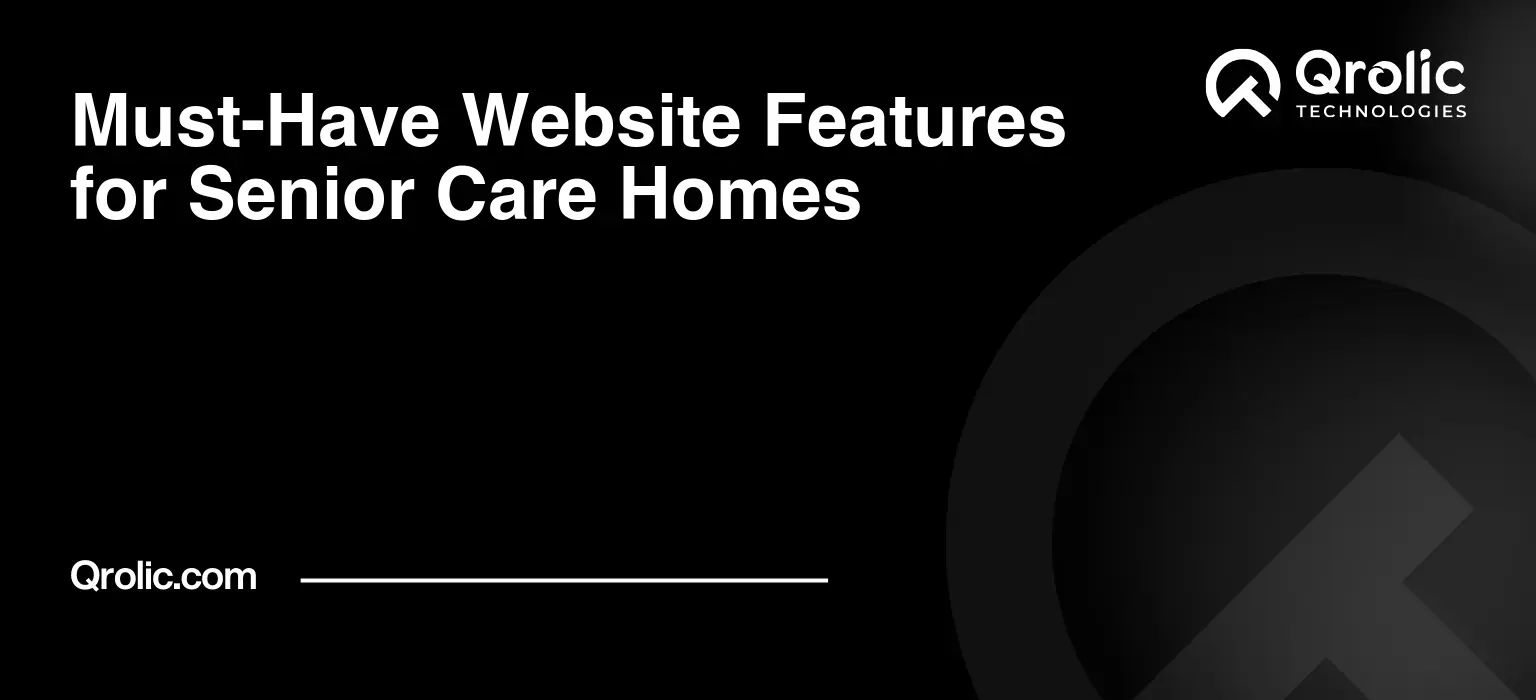Quick Summary:
- Your website is the vital digital first impression for families.
- Showcase detailed services, authentic photos, and testimonials.
- Optimize your site for mobile, search engines, and security.
- Make it easy for families to connect and take next steps.
Table of Contents
- Why Your Senior Care Home Needs a Stellar Website
- The Crucial Role of a Senior Care Website
- Consequences of an Ineffective Website
- Essential Website Features to Attract and Engage
- 1. Compelling Home Page: Your Digital Welcome Mat
- 2. Comprehensive Services List: Clearly Articulate Your Offerings
- 3. About Us: Build Trust and Transparency
- 4. Photo and Video Gallery: Showcase Your Community
- 5. Blog and News: Stay Relevant and Informative
- 6. Contact Information: Make it Easy to Connect
- 7. Call to Action: Guide Visitors to Take the Next Step
- 8. Testimonials and Reviews: Social Proof Matters
- 9. Accessibility: Ensure Everyone Can Use Your Website
- 10. Secure and Up-to-Date: Protect Your Visitors’ Information
- Beyond the Basics: Advanced Website Features
- 1. Interactive Map: Show Your Location
- 2. Virtual Tours: Offer a Remote Experience
- 3. Online Application Forms: Streamline the Admission Process
- 4. Integration with CRM: Manage Leads Effectively
- 5. Live Chat: Provide Instant Support
- 6. Events Calendar: Promote Activities
- 7. Staff Directory with Bios: Humanize Your Team
- 8. Downloadable Resources: Offer Value-Added Content
- 9. Multilingual Support: Cater to Diverse Audiences
- 10. Integration with Social Media: Extend Your Reach
- Optimizing Your Website for Search Engines (SEO)
- Keyword Research: Identify Relevant Search Terms
- On-Page Optimization: Optimize Your Website Content
- Off-Page Optimization: Build Authority and Backlinks
- Mobile Optimization: Ensure a Seamless Mobile Experience
- Website Speed Optimization: Improve User Experience and SEO
- Qrolic Technologies: Your Partner in Building Exceptional Senior Care Websites
- How Qrolic Technologies Can Help
- Our Commitment to Excellence
- Contact Us Today
Why Your Senior Care Home Needs a Stellar Website
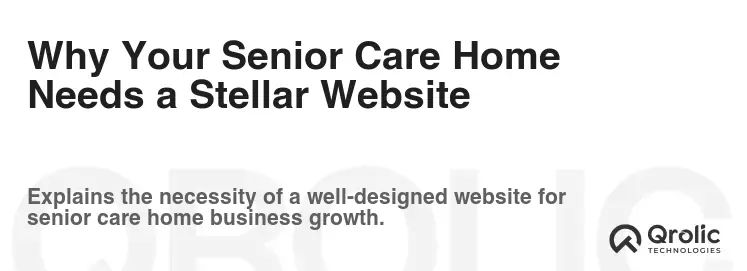
A website isn’t just an online brochure anymore; it’s the digital front door to your senior care home. It’s often the first impression you make, the place where families begin their search for a safe and supportive environment for their loved ones. In today’s digital age, a well-designed and functional website is crucial for attracting potential residents, reassuring families, and showcasing the unique value proposition of your senior care home. Without a robust online presence, you risk being overlooked by families actively seeking care options.
The Crucial Role of a Senior Care Website
A comprehensive senior care website serves multiple vital functions:
- First Impressions Matter: Your website is often the initial point of contact for families. A professional, empathetic, and informative site builds trust immediately.
- 24/7 Information Hub: It provides readily available information about your services, amenities, and care philosophy, answering common questions around the clock.
- Reaching a Wider Audience: A well-optimized website expands your reach beyond your local community, attracting families who may be relocating or searching from afar.
- Building Trust and Credibility: Through testimonials, certifications, and detailed staff profiles, you can establish your senior care home as a reliable and reputable choice.
- Simplifying the Inquiry Process: Online forms, virtual tours, and readily accessible contact info make it easy for families to connect and learn more.
- Showcasing Your Unique Difference: Highlight the special programs, therapies, and personalized care approaches that set you apart from competitors.
Consequences of an Ineffective Website
Conversely, a poorly designed or outdated website can have detrimental consequences:
- Lost Leads: Potential residents and their families may be deterred by a confusing, slow-loading, or uninformative website, leading them to explore other options.
- Negative Perception: An unprofessional website can damage your reputation, creating the impression that your senior care home is outdated or lacks attention to detail.
- Reduced Visibility: If your website is not optimized for search engines, it will be difficult for families to find you online.
- Increased Phone Calls & Staff Time: If essential information isn’t easily accessible on your website, your staff will be inundated with repetitive phone calls, reducing their ability to focus on resident care.
- Missed Opportunities: Failure to showcase your unique strengths and benefits can result in missed opportunities to attract the ideal residents and families.
Essential Website Features to Attract and Engage
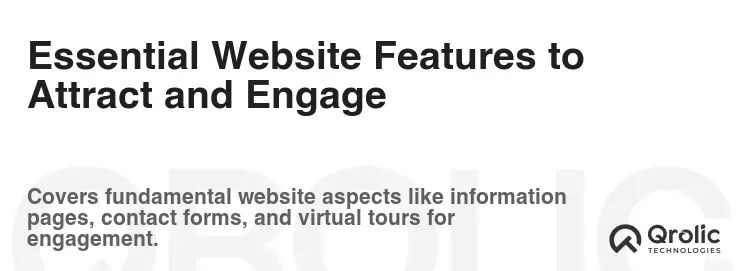
To create a truly effective senior care website, it’s important to include features that cater to the specific needs and concerns of your target audience. Here’s a breakdown of must-have elements:
1. Compelling Home Page: Your Digital Welcome Mat
The home page is the first thing visitors see, making it the most crucial part of your website. It must be visually appealing, informative, and easy to navigate.
- Headline That Grabs Attention: Immediately communicate the core value proposition of your senior care home (e.g., “Compassionate Care, Comfortable Living”).
- High-Quality Images and Videos: Showcase your facility’s welcoming environment, happy residents, and dedicated staff. Avoid stock photos; opt for authentic images that reflect your community.
- Clear Navigation: Ensure visitors can easily find what they’re looking for with intuitive menus and prominent call-to-action buttons (e.g., “Schedule a Tour,” “Request Information”).
- Concise and Engaging Content: Provide a brief overview of your services list, amenities, and care philosophy, highlighting what makes your home special.
- Mobile Responsiveness: Ensure your website adapts seamlessly to different screen sizes (desktops, tablets, and smartphones) for optimal viewing.
2. Comprehensive Services List: Clearly Articulate Your Offerings
Families are looking for specific care services list, and your website should clearly outline what you provide.
- Detailed Descriptions: Provide thorough descriptions of each service, including the level of care provided, the staff involved, and the benefits for residents.
- Categorization: Organize your services into logical categories (e.g., Assisted Living, Memory Care, Skilled Nursing) for easy browsing.
- Personalized Care Options: If you offer individualized care plans, highlight this flexibility and explain how you tailor your services to meet each resident’s unique needs.
- Specialty Programs: Showcase any specialized programs you offer, such as rehabilitation services, art therapy, or music therapy.
- Benefits-Oriented Language: Focus on the positive outcomes of your services (e.g., “Enhanced Quality of Life,” “Improved Cognitive Function”) rather than just listing features.
Examples of services to include are:
- Assisted Living
- Memory Care (Alzheimer’s and Dementia Care)
- Skilled Nursing Care
- Rehabilitation Services (Physical, Occupational, Speech Therapy)
- Respite Care
- Independent Living
- Hospice Care
- Medication Management
- Personal Care Assistance (Bathing, Dressing, Grooming)
- Housekeeping and Laundry Services
- Meal Preparation and Dining Services
- Social Activities and Recreation
- Transportation Services
3. About Us: Build Trust and Transparency
This section is your opportunity to tell your story, connect with families on an emotional level, and build trust.
- Mission and Values: Clearly articulate your organization’s mission, values, and philosophy of care.
- History and Background: Share your senior care home’s history and highlight any significant milestones or accomplishments.
- Staff Profiles: Introduce key members of your team, including their qualifications, experience, and dedication to resident care. Include professional photos.
- Testimonials and Reviews: Feature positive testimonials from residents and their families to demonstrate the quality of care you provide. (Request consent before publishing any testimonials).
- Accreditation and Licensing: Display any relevant accreditations, licenses, and certifications to demonstrate your commitment to quality and compliance.
4. Photo and Video Gallery: Showcase Your Community
Visual content is essential for giving families a realistic glimpse into life at your senior care home.
- High-Quality Photos: Include photos of your facility’s interior and exterior, resident rooms, common areas, dining rooms, and outdoor spaces.
- Resident Activities: Capture photos of residents engaging in activities, socializing, and enjoying the amenities.
- Virtual Tours: Offer virtual tours of your facility to allow families to explore the space remotely.
- Staff Interactions: Showcase photos of your staff interacting with residents in a caring and supportive manner.
- Video Testimonials: Include video testimonials from residents and their families to add a personal touch.
5. Blog and News: Stay Relevant and Informative
A blog is a powerful tool for sharing valuable information, building thought leadership, and improving your website’s search engine ranking.
- Senior Care Topics: Write about topics relevant to seniors and their families, such as aging gracefully, managing health conditions, and choosing the right care option.
- Community Events: Share news about upcoming events, activities, and programs at your senior care home.
- Expert Advice: Feature articles written by your staff members or guest experts on topics related to senior care.
- Resident Stories: Share inspiring stories about residents and their experiences at your senior care home.
- SEO Optimization: Optimize your blog posts with relevant keywords to improve your website’s search engine ranking.
Content suggestions include:
- Understanding the Different Levels of Senior Care
- Tips for Choosing the Right Senior Care Home
- The Benefits of Memory Care for Individuals with Alzheimer’s
- How to Prepare Your Loved One for a Transition to Senior Living
- Navigating the Costs of Senior Care
- Activities and Programs That Enhance Senior Wellbeing
- Spotting the Signs That Your Loved One Needs Assisted Living
6. Contact Information: Make it Easy to Connect
Your contact info should be readily available on every page of your website. Make it as easy as possible for families to reach you.
- Phone Number: Display your phone number prominently in the header and footer of your website.
- Email Address: Provide an email address for inquiries and requests.
- Physical Address: Include your physical address and a map for easy directions.
- Contact Form: Create a simple and user-friendly contact form for visitors to submit inquiries.
- Social Media Links: Include links to your social media profiles to encourage engagement and interaction.
7. Call to Action: Guide Visitors to Take the Next Step
A call to action (CTA) is a button or link that prompts visitors to take a specific action, such as scheduling a tour or requesting information.
- Prominent Placement: Place CTAs strategically throughout your website, particularly on the home page, services pages, and contact page.
- Clear and Concise Language: Use action-oriented language that encourages visitors to click (e.g., “Schedule a Tour,” “Request a Brochure,” “Contact Us”).
- Visual Appeal: Design your CTAs to be visually appealing and stand out from the rest of the page.
- Trackable Links: Use trackable links to monitor the performance of your CTAs and identify areas for improvement.
- Value Proposition: Clearly communicate the benefit of taking the action (e.g., “Schedule a Tour and See Our Community for Yourself!”).
8. Testimonials and Reviews: Social Proof Matters
Testimonials and reviews provide powerful social proof that can influence families’ decisions.
- Authenticity: Ensure that all testimonials and reviews are genuine and reflect the actual experiences of residents and their families.
- Variety: Include a variety of testimonials that highlight different aspects of your senior care home, such as the quality of care, the friendly staff, and the engaging activities.
- Placement: Display testimonials prominently on your website, particularly on the home page, services pages, and about us page.
- Video Testimonials: Consider using video testimonials to add a personal touch and increase credibility.
- Third-Party Reviews: Link to your profiles on third-party review websites, such as Caring.com and SeniorAdvisor.com.
9. Accessibility: Ensure Everyone Can Use Your Website
Accessibility is crucial for ensuring that your website can be used by people with disabilities, including seniors with visual, auditory, or cognitive impairments.
- WCAG Compliance: Adhere to the Web Content Accessibility Guidelines (WCAG) to make your website more accessible.
- Alternative Text: Provide alternative text for all images to describe their content to users with visual impairments.
- Keyboard Navigation: Ensure that your website can be navigated using a keyboard alone.
- Readable Fonts: Use fonts that are easy to read and have sufficient contrast with the background.
- Captions and Transcripts: Provide captions for videos and transcripts for audio content.
10. Secure and Up-to-Date: Protect Your Visitors’ Information
Security is essential for protecting your visitors’ personal and financial information.
- SSL Certificate: Install an SSL certificate to encrypt data transmitted between your website and visitors’ browsers.
- Regular Updates: Keep your website’s software and plugins up to date to patch security vulnerabilities.
- Strong Passwords: Use strong passwords for your website’s administration panel and database.
- Firewall Protection: Implement a firewall to protect your website from malicious attacks.
- Privacy Policy: Clearly outline your privacy policy and how you handle visitors’ personal information.
Beyond the Basics: Advanced Website Features
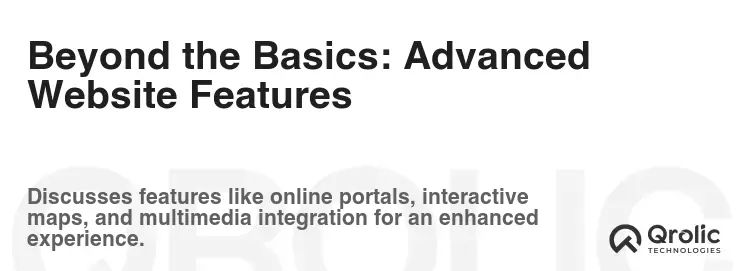
Once you’ve covered the essential features, consider adding these advanced elements to further enhance your website and attract more families:
1. Interactive Map: Show Your Location
An interactive map embedded on your contact info page or in a dedicated “Location” section helps visitors easily find your senior care home. Use Google Maps or a similar service to provide clear directions and allow users to zoom in and out for better navigation.
2. Virtual Tours: Offer a Remote Experience
Virtual tours allow potential residents and their families to explore your facility remotely, providing a realistic glimpse into the environment and amenities. This is especially valuable for those who are unable to visit in person.
3. Online Application Forms: Streamline the Admission Process
Simplify the application process by offering online application forms that families can fill out and submit directly through your website. This saves time and effort for both parties and streamlines the admissions process.
4. Integration with CRM: Manage Leads Effectively
Integrate your website with a customer relationship management (CRM) system to capture leads, track interactions, and manage your sales pipeline more effectively. This helps you stay organized and provide personalized follow-up to potential residents and their families.
5. Live Chat: Provide Instant Support
Implement live chat on your website to provide instant support to visitors who have questions or need assistance. This can help you convert more leads and provide a better user experience.
6. Events Calendar: Promote Activities
An events calendar showcases the activities and programs available at your senior care home, giving families a sense of the vibrant community life.
7. Staff Directory with Bios: Humanize Your Team
A staff directory with bios introduces key members of your team, highlighting their qualifications, experience, and dedication to resident care. This helps build trust and transparency.
8. Downloadable Resources: Offer Value-Added Content
Provide downloadable resources, such as brochures, checklists, and guides, that offer valuable information to seniors and their families. This positions you as a trusted resource and helps generate leads.
9. Multilingual Support: Cater to Diverse Audiences
If your community serves a diverse population, consider offering multilingual support on your website to cater to different language preferences.
10. Integration with Social Media: Extend Your Reach
Integrate your website with social media platforms to extend your reach, engage with your audience, and share relevant content.
Optimizing Your Website for Search Engines (SEO)
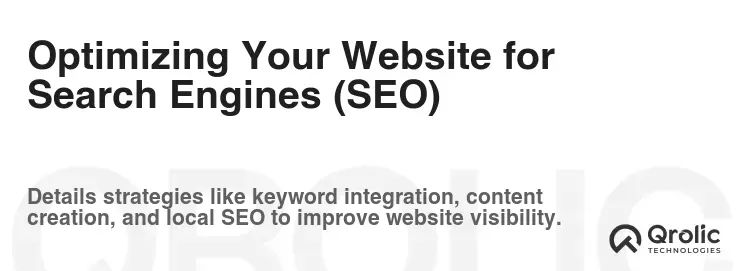
Creating a visually appealing and informative website is only half the battle. You also need to optimize it for search engines to ensure that families can easily find you online when they’re searching for senior care options.
Keyword Research: Identify Relevant Search Terms
Begin by conducting keyword research to identify the terms that families are using to search for senior care homes in your area. Use tools like Google Keyword Planner, SEMrush, or Ahrefs to find relevant keywords with high search volume and low competition.
Examples of Keywords:
- senior care website
- assisted living [your city/region]
- memory care facilities near me
- nursing homes [your city/region]
- respite care services
- senior living communities
- Alzheimer’s care [your city/region]
On-Page Optimization: Optimize Your Website Content
Once you’ve identified your target keywords, optimize your website content to include those keywords naturally and strategically.
- Title Tags: Write compelling title tags for each page of your website that include your primary keyword and a brief description of the page’s content.
- Meta Descriptions: Craft engaging meta descriptions that entice users to click on your website in search results.
- Header Tags (H1-H6): Use header tags to structure your content and highlight important keywords.
- Content Optimization: Incorporate your target keywords throughout your website content in a natural and relevant way.
- Image Optimization: Optimize your images by using descriptive file names and alt tags that include your target keywords.
Off-Page Optimization: Build Authority and Backlinks
Off-page optimization involves building your website’s authority and reputation by earning backlinks from other reputable websites.
- Link Building: Acquire backlinks from relevant websites in the senior care industry, such as directories, associations, and blogs.
- Social Media Marketing: Promote your website content on social media to increase visibility and drive traffic.
- Online Reputation Management: Monitor your online reputation and respond to reviews and comments in a timely and professional manner.
- Local SEO: Optimize your website for local search by claiming your Google My Business listing and ensuring that your NAP (Name, Address, Phone Number) information is consistent across the web.
Mobile Optimization: Ensure a Seamless Mobile Experience
With the majority of internet users accessing websites on mobile devices, it’s crucial to ensure that your website is fully optimized for mobile.
- Responsive Design: Use a responsive design that adapts seamlessly to different screen sizes and devices.
- Mobile-Friendly Navigation: Ensure that your website’s navigation is easy to use on mobile devices.
- Fast Loading Speed: Optimize your website for fast loading speed on mobile devices.
- Touch-Friendly Elements: Use touch-friendly elements, such as large buttons and clear calls to action, to improve the user experience on mobile devices.
Website Speed Optimization: Improve User Experience and SEO
A fast-loading website is essential for both user experience and SEO.
- Optimize Images: Compress images to reduce file size without sacrificing quality.
- Leverage Browser Caching: Enable browser caching to store static assets on users’ devices.
- Minify CSS and JavaScript: Minify CSS and JavaScript files to reduce their size.
- Choose a Fast Hosting Provider: Select a hosting provider that offers fast and reliable performance.
- Use a Content Delivery Network (CDN): Use a CDN to distribute your website’s content across multiple servers, improving loading speed for users around the world.
Qrolic Technologies: Your Partner in Building Exceptional Senior Care Websites
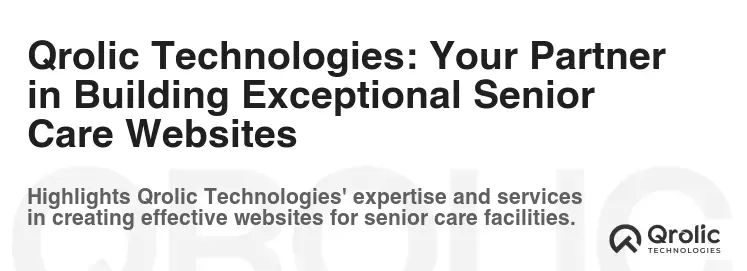
At Qrolic Technologies (https://qrolic.com/), we understand the unique needs of senior care homes and the importance of having a website that effectively attracts and engages potential residents and their families. We specialize in designing and developing custom senior care website solutions that are visually appealing, user-friendly, and optimized for search engines.
How Qrolic Technologies Can Help
- Custom Website Design: We create custom website designs that reflect your senior care home’s unique brand and values.
- Mobile-First Development: We ensure that your website is fully responsive and optimized for mobile devices.
- SEO Optimization: We optimize your website for search engines to improve your visibility and attract more organic traffic.
- Content Management System (CMS): We build your website on a user-friendly CMS, such as wordpress, that allows you to easily update and manage your content.
- Ongoing Support and Maintenance: We provide ongoing support and maintenance to ensure that your website remains secure and up-to-date.
- Integration with Third-Party Tools: We can integrate your website with various third-party tools, such as CRM systems, email marketing platforms, and social media platforms.
- Accessibility Compliance: We ensure that your website is accessible to people with disabilities, adhering to WCAG guidelines.
Our Commitment to Excellence
We are committed to providing our clients with exceptional website solutions that help them achieve their business goals. We work closely with you to understand your specific needs and requirements and develop a website that is tailored to your unique brand and target audience.
Contact Us Today
If you’re looking for a partner to help you build a senior care website that attracts and engages potential residents and their families, contact Qrolic Technologies today. Visit our website at https://qrolic.com/ to learn more about our services list and how we can help you achieve your online goals. Our contact info is readily available on our website for your convenience.
